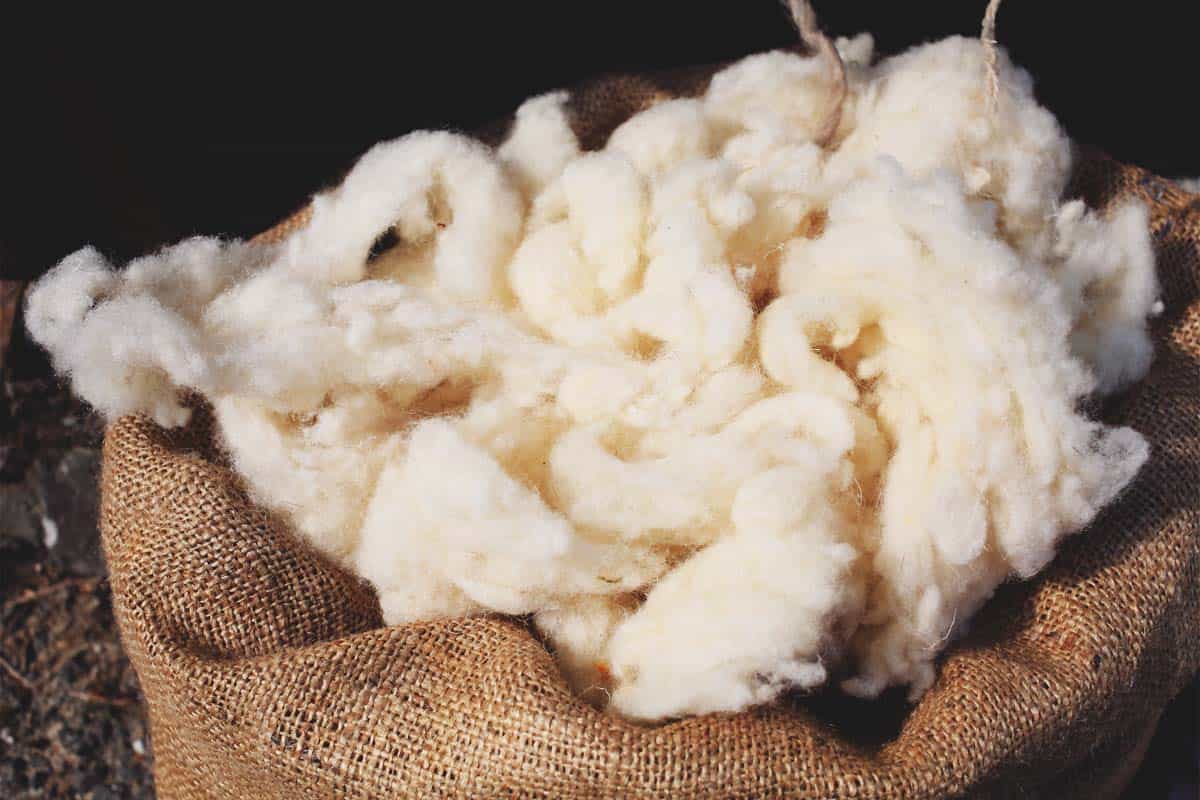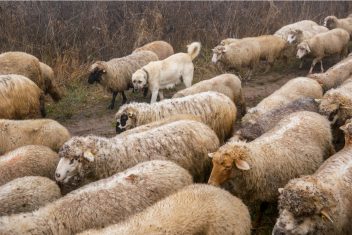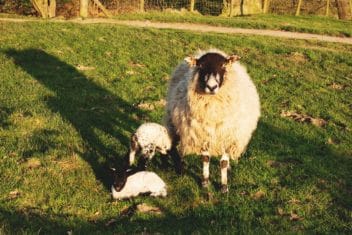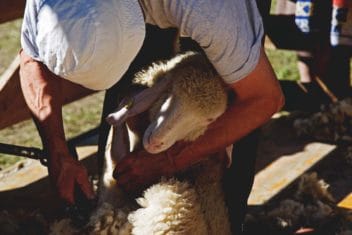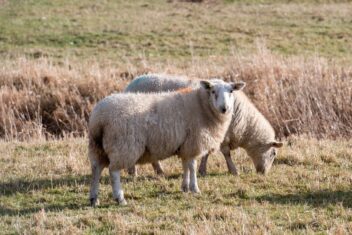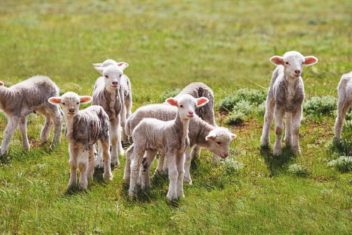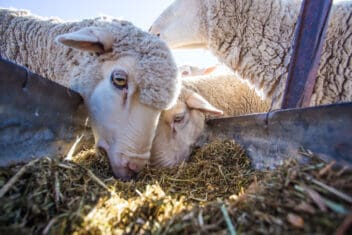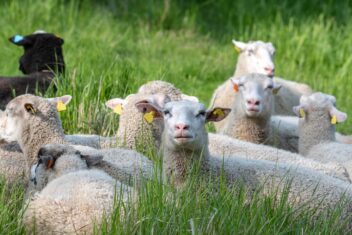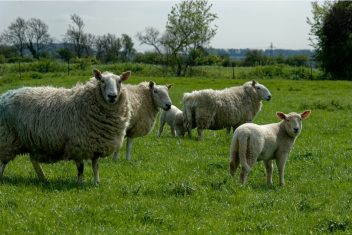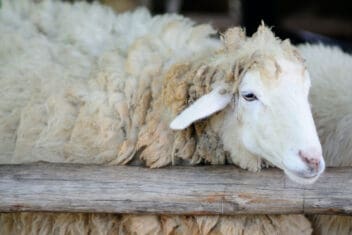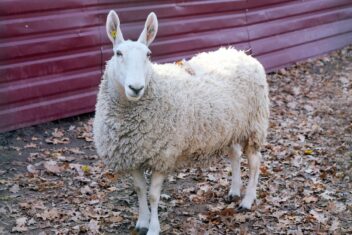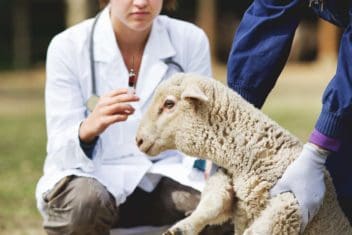On my farm, we raise Icelandic sheep. We raise them primarily to sell and eat the meat ourselves. However, there are plenty of other reasons why people choose Icelandics.
Not only can they be raised for milk and as breeding animals, but they also produce some fiber. After a lot of deliberation, I decided that using the wool from my sheep for spinning (and fabric production) just wasn’t worth it.
I’d love to have the time to clean and spin wool to make my own usable fiber, but it’s just not something in the cards.
The first time we sheared our sheep, we were able to give the wool away to an aunt. This year, though, we had no takers – meaning we had to get creative and find some unique homestead uses for wool – that didn’t involve spinning it!
Here are some ways you can use the wool from your sheep so that you don’t have to let it go to waste.
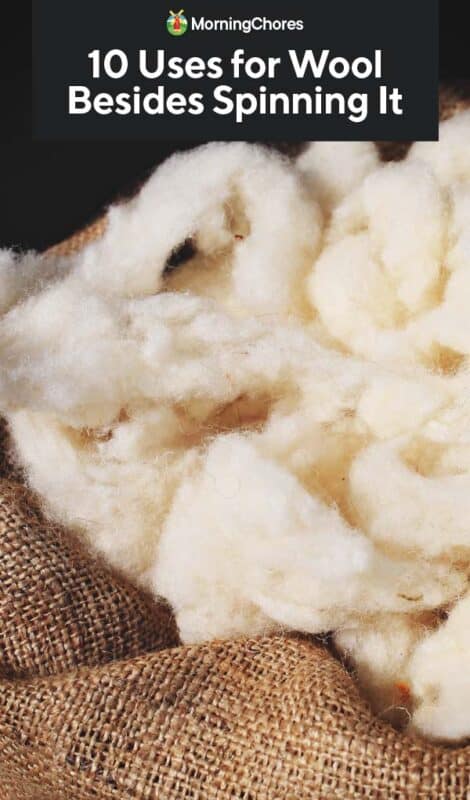
Why You Might Not Want to Spin Wool (But Still Need to Shear)
For a while, we wondered whether it would be possible to just avoid shearing our sheep. This way, we could avoid the added chore and clutter of excess wool. Unfortunately, for most flocks of sheep, that’s not a good idea.
There are some hair sheep that shed their fiber regularly, just like other types of animals. However, most sheep produce dense coats of wool that they are unable to shed.
Too much wool means a sheep cannot regulate its body temperatures as well. While some wool can act as insulation and help a sheep both cool and heat itself, too much wool causes problems.
Plus, when urine, feces, and other debris get caught in the wool, it can attract flies and other pests. It can also increase bacterial loads. This is why most people choose to shear their sheep prior to lambing – it creates a more sanitary environment.
This doesn’t necessarily apply to our sheep or even most sheep. However, there are some breeds that develop heavy coats around their eyes. This can obstruct their line of sight and make them more vulnerable to accidental injury or predator attacks.
However necessary shearing your sheep is, the fact of the matter still remains that spinning wool can be quite cumbersome and time-consuming. Once the wool has been taken off the sheep, it then needs to be cleaned, carded, and processed before you can turn it into usable yarn.
If you aren’t careful about keeping your sheep in a clean barn with absolutely pristine conditions in the weeks prior to shearing, cleaning that wool becomes very difficult. Even if your environment is immaculate, preparing wool is still a long, drawn-out process.
The Classic Use: Using Wool for Garments
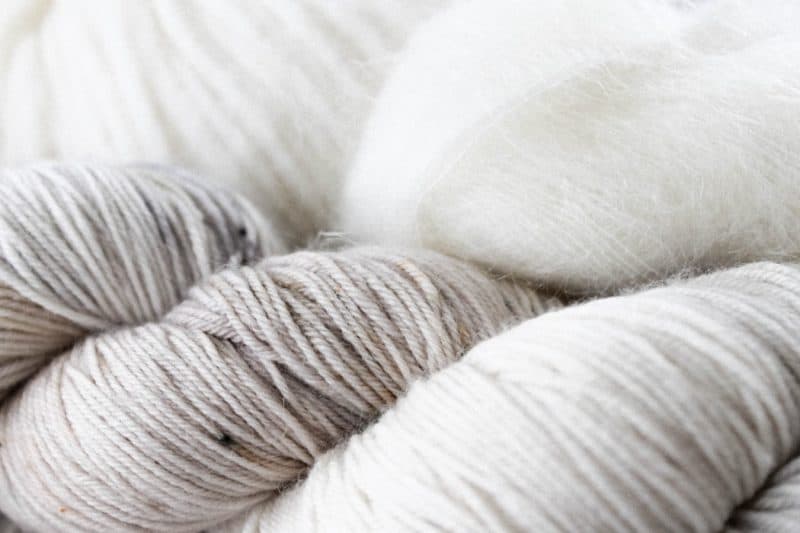
Wool, or wool fleece, is traditionally harvested from sheep to be used in things like clothing and bedding. Wool has a texture and crimp that makes it easier for the fibers to bind together, making wool a bulkier and more insulating material than other fibers.
It has a high thermal resistance, meaning it can be used for garments worn by people living in very hot and in very cold climates. It is more fire retardant than many materials, too.
Depending on where it was harvested from the sheep, what kind of sheep it was from, and the quality of the fiber, wool can be made into felt, tweed, yarn, wool crepe, wool satin, and many other types of fabric, too.
In addition to clothing and bedding, wool is also used for things like piano hammer coverings, horse rugs, saddle cloths, insulation, carpeting, upholstery, and more. It’s an eco-friendly fiber that is used all over the world.
Untraditional Uses for Wool
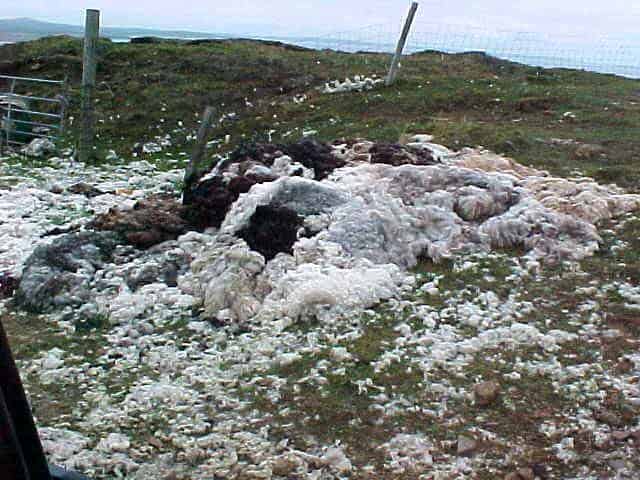
Just because wool is versatile and ubiquitous, that doesn’t mean you need to use it in spinning in order to make the most of your supply! No, you can use it in other ways, and these tricks are just as useful for those leftover bits drifting all over the place after shearing.
Here are some of the other tricks and uses for this natural fiber.
1. Mulch
There are lots of companies that specialize in making wool pads designed to mulch your garden. However, you don’t need to buy the expensive pads in order to benefit from the powers of wool.
Instead, wrap wool around the trunks of your large plants or trees. Since it has such great insulating properties, it can prevent weeds while also helping to retain soil moisture.
2. Insulation
There are several Amish families in my community who use wool as insulation. Although most modern homes don’t utilize wool anymore, wool insulation was incredibly popular before synthetic materials took its place.
Why? It has excellent thermal properties and can also provide an acoustic buffer in walls.
All insulation has a specific R-value. This indicates its level of thermal resistance. Because wool can readily absorb and then release moisture with ease, wool has an excellent R-value rating. A side benefit of using wool as insulation is that it won’t require you to wear any protective equipment while you’re installing it, either!
3. Furniture
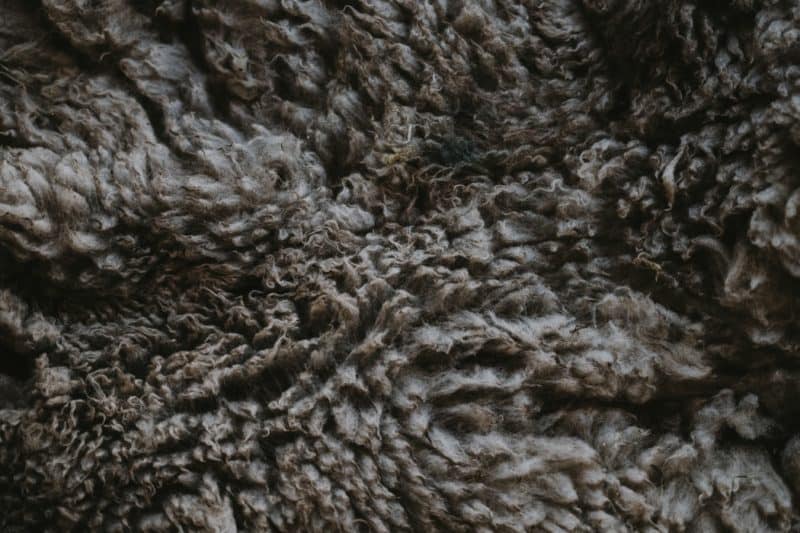
Wool is often used in carpeting, but it can also be used on upholstery. In fact, many companies in the public transportation and aircraft sector use wool for their seat upholsteries. Take a look the next time you’re on an airplane!
Wool can also be used in things like furniture stuffing and covers. It’s found in everything from cushions to lampshades, curtains to wallpapers. If you’re trying to find a way to repurpose your leftover wool on your homestead, why not use it as filling in a throw pillow for the couch?
There are plenty of DIY projects I can think of where a cheap filling would be welcome, such as these DIY cat beds, an envious DIY daybed for those lazy Sundays, and sewing projects.
4. Fertilizer
Fertilizer is one of the great uses for wool you may not have known of! It takes a while to break down, but when you toss wool into the compost pile, it adds beneficial nutrients, including calcium and sodium. It’s about 9% nitrogen, 1% phosphate, and 2% potash, too.
When you consider that most wool, if used for fertilizer, is probably still dirty, bear in mind that you’ll be adding beneficial nutrients from the sheep droppings to your garden beds, too.
Raised garden beds and a keyhole garden bed, are two options where extra ‘filling’ such as wool would be put to great use. Not only will they bulk up the area to be filled, but as it breaks down, it adds nutrients to the soil.
5. Skin Care
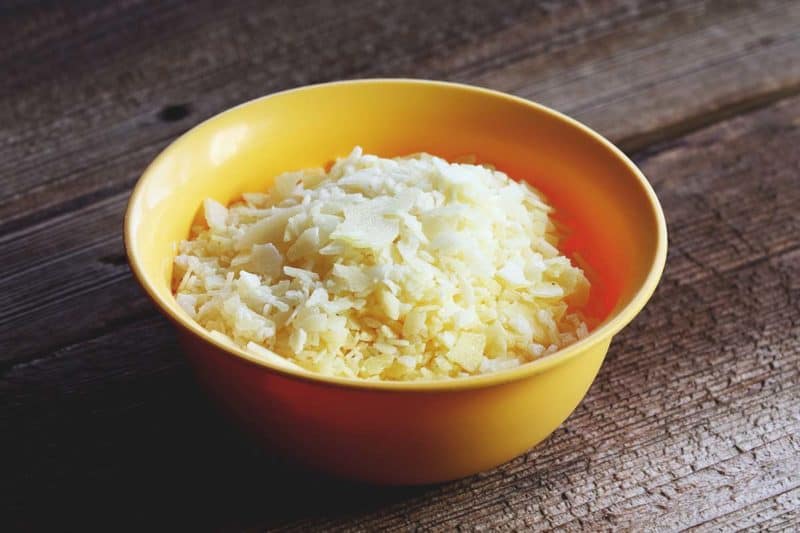
Of the many by-products of raising sheep – including burn-free fertilizer (their poop!) and of course, the sheer enjoyment of the hobby – one that you can’t overlook is lanolin. Lanolin is an oil produced by the sebaceous glands of wool-bearing animals. Also known as wool wax or wool grease, lanolin is commonly harvested by producers and used in various ointments.
In particular, lanolin is an excellent treatment for breastfeeding moms, who tend to suffer from sore and cracked skin on their breasts.
6. Brick Reinforcement
There is still research being done on this, but developers have found a way to use a combination of seaweed and wool to make bricks even stronger. This is an eco-friendly option that is not only better for the environment, but also affordable.
7. Cleaning Material

Leave some wool on hand for accidental spills and messes. You already know how absorbent wool is – this makes using wool highly effective at cleaning up even tough messes, like oil spills.
8. Packing Material
Wool is lightweight yet insulating, making it a great packing material. If the wool you saved from shearing your sheep is relatively clean, consider saving it to use the next time you ship a package.
9. Firefighting

This one might not apply to everyone, but it’s worth mentioning. If you know someone who is looking for fire retardant clothing, you may want to consider donating your wool. All wool has a high flame retardancy rating but merino wool is especially effective. In fact, this material has long been the material of choice for firefighters’ uniforms.
In addition to using wool for its flame retardancy, wool does not shrink, melt, or stick to your skin when it’s exposed to high temperatures. It also doesn’t release toxic chemicals or odors into the air when it’s burned.
10. Hügelkultur
Hügelkultur is a method of gardening in which you build a raised garden literally from the ground up. You’ll add all kinds of “waste” material, including logs, branches, food scraps, manure, grass clippings – typically, everything you would normally put into a compost pile – to the heap before covering it with soil. The ‘waste’ inside the heap decomposes and releases nutrients, making a fertile raised garden mound meet compost pile meets…well, meets awesome!
Uses for wool includes throwing it into your hügelkultur construction – this is something I’ve done with great success. Add wool to the bottom of your hügelkultur bed. You’ll find that it helps to retain moisture and builds fertility, with very little effort on your part.
Plus, it doesn’t need to be cleaned!
Benefits of Using Wool

There are many uses for wool around a homestead. Not only is this a natural, renewable resource, but if you’re raising sheep already, it’s an automatic byproduct of your efforts. Contrary to popular belief, shearing, when done correctly, does not hurt sheep. Therefore, it is also a humane fiber that you can produce yourself at home.
Using wool is a great way to reduce your reliance on the outside world. Not only is it biodegradable, but it’s also eco-friendly. Unlike other materials like polyester, wool is 100% natural and has many applications outside of just offering you something to wear.
If you’re not raising sheep yet, why not give it a try? Even if spinning and knitting aren’t your thing, you’re sure to find some other use for this versatile material.
